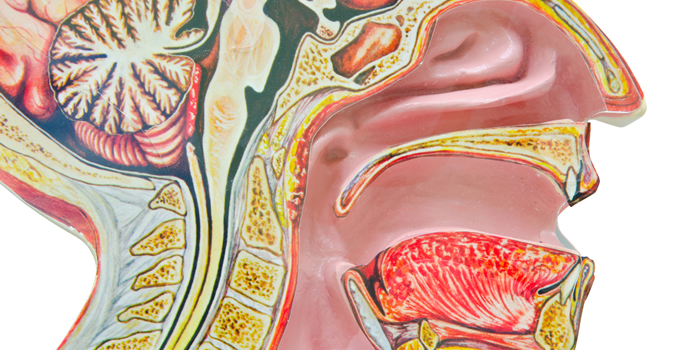
Nasal Anatomy
Divided into two parts by a vertical partition known as the nasal septum, the nose is the organ of smell. In addition to bringing humidified air to the lungs, the nose also acts as a filter by keeping out contaminants and irritants like pollen and dirt with tiny hairs inside of the nostrils. Nerves in the upper nasal cavity also have an effect on the taste of the foods you eat. Noses come in all shapes and sizes. Even so, the basic nasal anatomy is the same for everyone.
Outside Nasal Structure
From the outside, the nose has a pyramid shape. The nasal root is the part of the nose that connects with your forehead. The apex, at the "bottom" of the nose, is where the openings of the nostrils (nares) are located. The outside of the nose is made up of the nasal bone, firm, flexible cartilage, and fatty tissue. Small muscles connecting to the external nose control some facial expressions.
Nasal Cavity
The nasal skeleton contains the nasal cavity. Lined by a sheet of respiratory cells (epithelium), the vestibule is the first part of the nasal cavity just on the inside of the nostrils. Mucus-secreting cells are found in the respiratory region. The olfactory region is what allows you to smell. The olfactory system has millions of receptors that help the brain interpret around 10,000 or so different smells. Above the soft palate at the back of your nose is the nasopharynx, which connects your nose to your mouth. A tube connects the nasopharynx to the middle ear.
Mucous Membrane
Freshly inhaled air goes through the nasal cavity, down your throat, and into your lungs. Various small structures in the nose warm, moisten, and filter this air before it reaches your lungs. Specifically, it's a moist, thin layer of tissue called the mucous membrane that warms and moistens the air you breathe. This is the part of the nose that produces sticky stuff ("snot") that captures dust and other particles. Unwelcome particles are also removed from the nose by an involuntary expulsion of air (sneezing).
Sinus Cavities
Located around or near the nose, sinus cavities are small tunnels or spaces. The largest of these hallow cavities is about an inch across.
- The sphenoid sinuses are located behind your nose.
- The ethmoid sinuses are between your eyes.
- The frontal sinuses are in the center of your forehead.
- The maxillary sinuses are in your cheekbones.
Most of these sinus cavities drain into the nose through a drainage pathway (middle meatus).
The nose is not an independent structure. For instance, if you have infected sinuses (sinusitis), you could have a sore throat. Nasal allergies often affect the throat and may place pressure on parts of the ears via eustachian tubes that connect the back of the throat and nose to the middle ear. Ultimately, the nose, ears, and throat are designed to work together to perform many important functions.

